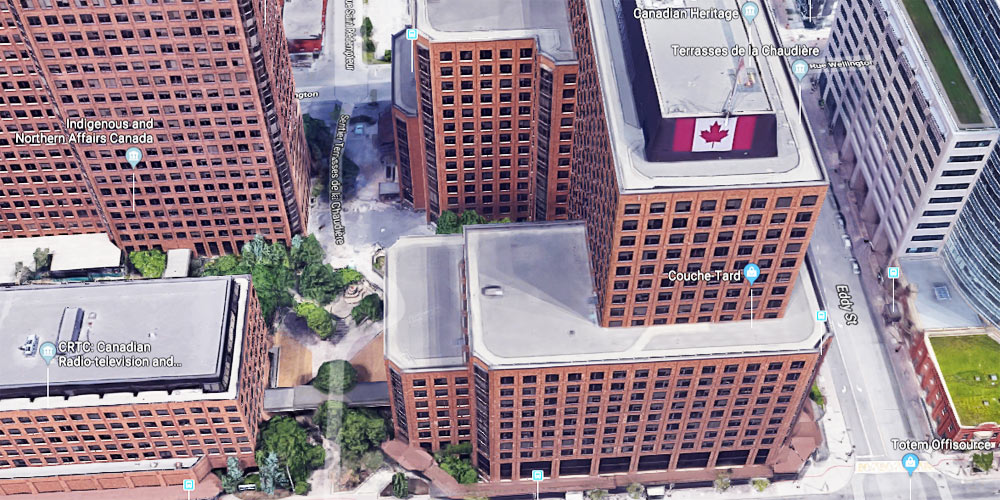
On Thursday’s episode of CANADALAND Short Cuts, Zane Schwartz, the chair of the Canadian Association of Journalists (CAJ), dropped what sounded like it could be bombshell news. A panel of journalism experts convened by the federal government had delivered a set of recommendations that included a massive funding increase to the coming newspaper bailout — and the government, Schwartz suggested, was poised to go along with their proposals.
“We’re waiting on Pablo Rodriguez, Minister of Heritage, to say, ‘Yes, I like the rules’ or ‘I’m gonna change them.’ Early indications are that he’s gonna greenlight the rules,” said Schwartz.
Among the panel’s members was a CAJ appointee.
Something big happened very quietly last week.
According to the chair of the Canadian Association of Journalists, Canada's dying newspapers just succeeded in DOUBLING the amount of government bailout money they're likely gonna get.
Here's how they did it:
— Jesse Brown (@JesseBrown) July 25, 2019
The largest piece of the bailout is a labour tax credit that will subsidize one quarter of the salaries of eligible newsroom employees, to a maximum of $13,750 per person.
“So one of the things that the panel changed, which is really odd, is there used to be a cap on how much of a salary the government would cover,” said Schwartz, a reporter for The Logic. “So the legislation said they’d cover [25 per cent] of salary. Now they’re gonna go to 35 per cent of salary. The legislation said they’d only cover the first $55,000 of someone’s salary. Now they’re gonna cover $85,000.”
The new potential maximum subsidy would be $29,750 per person — a significant boost to a refundable tax credit already budgeted to cost the government $360 million over five years.
“On Postmedia’s most recent earnings call, they said the newspaper bailout would give them $8 to $10 million a year. We’re looking at 20 to 25 [million], if the government allows” the proposed changes, said Schwartz.
But did the panel of eight industry representatives actually dip into the federal treasury, changing the framework of an already-budgeted bailout package?
Nope. The amount of the tax credit — 25 per cent of salaries up to $55,000 — has already been established in law. (The Budget Implementation Act, 2019, received Royal Assent last month.) Any changes to those numbers would require new legislation, and unless the PM considers this some sort of emergency, the House won’t be sitting again until after the October election. And even if the Liberals get back in, there’s little reason to believe they intend to adopt this particular plank.
The Journalism and Written Media Independent Panel of Experts, as it was officially called, divided their report to the government into three sections [pdf]. The first was their “proposed interpretation rules” for terms in the law — such as “journalist” — on which the Canada Revenue Agency doesn’t want ambiguity. The second was advice on the establishment of another panel to which the CRA could turn when it has questions about whether an applicant meets the journalistic criteria to qualify for the labour tax credit and other measures.
Those were the pieces the panel was tasked with providing.
But they also delivered a third section of “general recommendations” — largely a wish list of other measures the government could take to salvage the industry, most of which would require legislative changes. The amendments to the tax credit amounts fell into that category.
Asked about the suggested increase to the tax credit, the press secretary for Heritage Minister Rodriguez offered a statement (previously provided to the Globe) that touched only on the recommendations directly within the panel’s mandate. “We thank the panel for its recommendations,” wrote Simon Ross. “We will now move thoughtfully to support journalism across the country. From the beginning, we have said that we will protect the independence of journalists by letting the industry determine the criteria and definitions. That’s why we created this panel.”
So if we can assume that the government doesn’t want to monkey with the panel’s proposed criteria and definitions, and nearly everything else would require new laws, what could still be changed at this point?
https://twitter.com/ZaneSchwartz/status/1154449727418556416
The CAJ, which appointed former CBC Ombudsman Esther Enkin to the panel, has been critical of a number of the outcomes, including the fact that there was no opportunity to introduce a mechanism to ensure that newspaper executives won’t be able use the infusion of new money to line their own pockets or pay down corporate debt.
And while the panel recommended that the government publish a list of the outlets that successfully obtain “Qualified Canadian Journalism Organization” status in order to benefit from the new measures, the CAJ also wants the government to name those outlets whose applications are denied and the rationale for those decisions.
“We believe the recommendations of the panel improved the equity of the proposed measures,” CAJ president Karyn Pugliese said in their statement. It is our position that more can still be done to level the playing field for small outlets and ensure accountability in the process.”
Canadaland news editor Jonathan Goldsbie worked closely with panel member Brad Honywill in 2015-16, when Goldsbie was chair of the bargaining unit at NOW Magazine and Honywill was the local representative for Unifor 87-M.
Top image: a neat Google Maps rendering of the Department of Canadian Heritage headquarters in Gatineau.